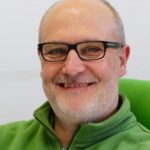Link to Pubmed [PMID] – 27151638
Neuron 2016 05;90(3):452-70
Nicotinic acetylcholine, serotonin type 3, γ-amminobutyric acid type A, and glycine receptors are major players of human neuronal communication. They belong to the family of pentameric ligand-gated ion channels, sharing a highly conserved modular 3D structure. Recently, high-resolution structures of both open- and closed-pore conformations have been solved for a bacterial, an invertebrate, and a vertebrate receptor in this family. These data suggest that a common gating mechanism occurs, coupling neurotransmitter binding to pore opening, but they also pinpoint significant differences among subtypes. In this Review, we summarize the structural and functional data in light of these gating models and speculate about their mechanistic consequences on ion permeation, pathological mutations, as well as functional regulation by orthosteric and allosteric effectors.


